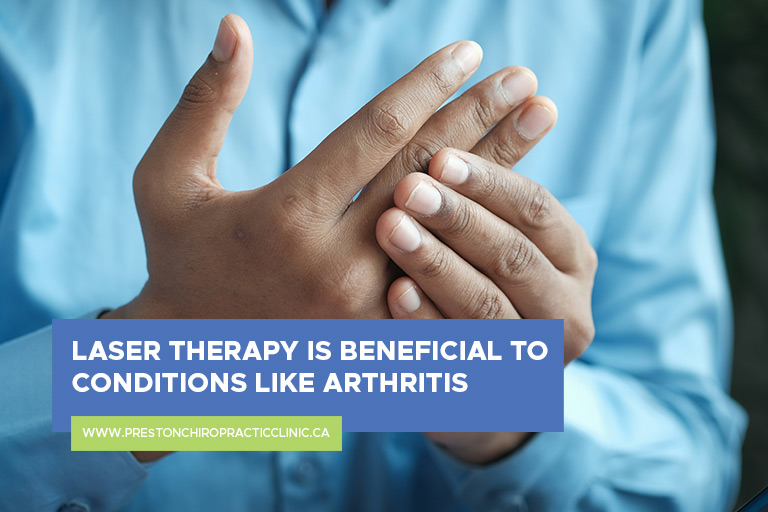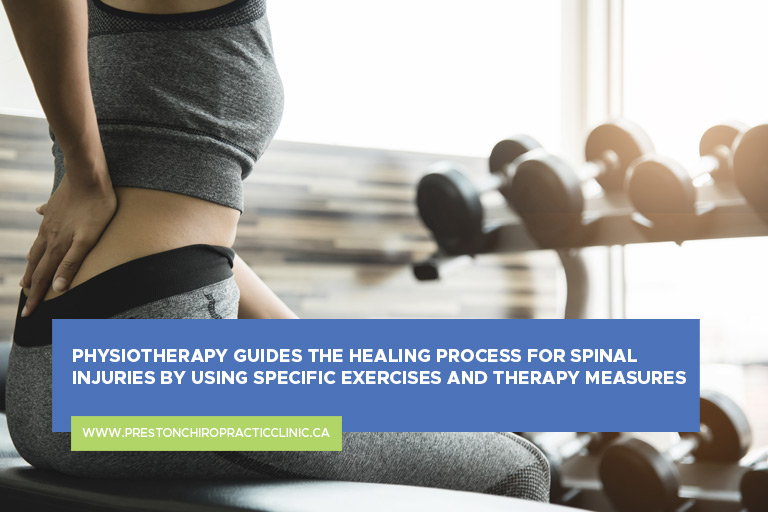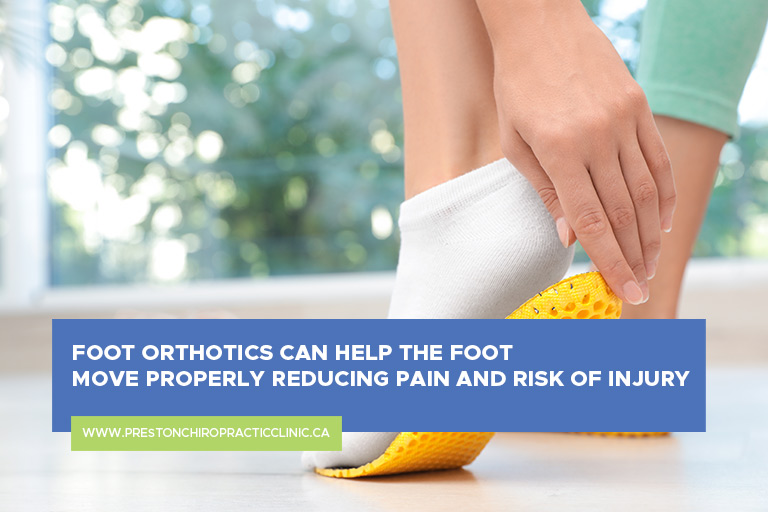 29 Apr 2024
29 Apr 2024
Benefits of Laser Therapy for Chronic Pain Management
Laser therapy is a promising non-invasive, drug-free alternative for managing chronic pain, offering a promising solution for those seeking relief. It is backed by scientific research and is essential for patients and healthcare providers to understand its benefits and mechanisms as part of a comprehensive pain management strategy.
Laser therapy, a medical treatment known for offering targeted pain relief and tissue repair, is increasingly popular for its benefits, including reduced inflammation, accelerated healing, and decreased pain levels. As a transformative tool, laser therapy for chronic pain provides hope for those struggling with conventional treatment methods.
What is Laser Therapy?
Laser therapy, also known as low-level laser therapy (LLLT) or photobiomodulation (PBM), is a form of light therapy that utilizes specific wavelengths of light to interact with tissue. It is designed to induce a biological response in the cells, leading to reduced pain, inflammation, and enhanced tissue healing. Unlike surgical or high-intensity lasers, the lasers used in this therapy do not cause thermal damage to tissues, making it a safe option for pain management. It’s applicable across various conditions, including musculoskeletal injuries, neuropathic pain, and chronic degenerative conditions.
Does Laser Therapy Work?
The mechanism of laser therapy revolves around its ability to trigger photobiological processes in the cells. When laser light is absorbed by cellular components, it leads to an increase in cellular energy production (ATP), promoting healing and reducing inflammation. The therapy enhances blood circulation to the affected area, facilitating the removal of waste products and the supply of oxygen and nutrients. This process not only accelerates tissue repair but also modulates pain signals sent to the brain, providing symptomatic relief for chronic pain sufferers.
How Laser Therapy Helps with Chronic Pain

Laser therapy is making strides as a leading treatment for chronic pain. Here’s how it offers a beacon of hope:
- Tissue Repair and Cell Growth: Laser therapy accelerates cellular reproduction and growth by targeting the injury area, enhancing energy availability, allowing faster repair and reducing pain. This is crucial for chronic conditions where slow healing prolongs discomfort, making it a vital treatment option.
- Faster Wound Healing: Laser therapy enhances tissue repair quality, speed, and tensile strength, making it beneficial for athletes with quick recovery times. It stimulates muscle, tendons, and ligament cells, ensuring a quicker return to function, making it an essential tool in sports medicine.
- Reduced Fibrous Tissue Formation: Laser therapy minimizes scar tissue formation, promoting flexible and stronger tissue repair, especially after surgery, cuts, or burns. It aligns collagen fibres, reducing fibrous tissue and improving recovery outcomes by minimizing the formation of excessive scar tissue.
- Anti-inflammation: Laser therapy’s anti-inflammatory effects are crucial in managing chronic conditions, as they reduce inflammation, decrease swelling and pain, and provide immediate relief by suppressing inflammatory markers and enhancing anti-inflammatory mediators, making it a cornerstone for treating various inflammatory conditions.
- Increased Vascular Activity: Enhancing the formation of new capillaries in damaged tissues not only speeds up the healing process but also reduces recovery time significantly. This increased vascular activity ensures a better supply of oxygen and nutrients to the affected area, promoting faster removal of waste products and thereby facilitating a quicker healing response.
- Stimulated Nerve Function: Laser therapy can expedite the recovery of nerve function from nerve damage, reducing symptoms and restoring function, especially beneficial for patients with neuropathies or those recovering from nerve injuries, by stimulating nerve cell reconnection more quickly.
- Immunoregulation: Laser therapy significantly enhances the immune system by stimulating immunoglobulins and lymphocytes, thereby strengthening the body’s immune response. The light energy absorbed by chromophores triggers biological reactions, enhancing immunity and enabling the body to fight off infections and diseases, crucial for overall health and recovery.
Benefits of Laser Therapy

Laser therapy stands out for its myriad benefits, particularly for those grappling with chronic pain:
- Non-invasive: Laser therapy offers a significant advantage over surgical methods by eliminating the need for incisions. This non-invasive pain management approach allows for pain relief without the risks associated with surgery, making it a preferable choice for patients seeking less aggressive treatment options.
- Safe and Painless: Patients often experience a warm, soothing sensation during laser therapy, highlighting its safety and comfort. This painless procedure stands as a testament to its appeal, especially for those who may fear traditional medical treatments.
- No Side Effects: Laser therapy distinguishes itself from pharmaceutical approaches by offering a treatment free from adverse side effects. The negligible side effects of laser therapy make it an appealing option for individuals looking for sustainable, long-term solutions to manage chronic conditions.
- Improved Vascular Activity: The stimulation of new capillary formation by laser therapy accelerates the healing process in damaged tissues. This improvement in vascular activity is crucial for reducing recovery times and facilitating quicker returns to daily activities.
- Increased Metabolic Activity: By boosting the production of essential enzymes, oxygen, and nutrients, laser therapy enhances metabolic activity within cells. This increase supports better cell health and function, contributing to the body’s overall healing process.
- Flexibility and Mobility: Laser therapy plays a pivotal role in reducing inflammation and promoting the healing of tissues, which in turn aids in restoring flexibility and mobility. This benefit is particularly valuable for patients looking to regain or maintain their physical capabilities following injury or due to chronic conditions.
- Reduced Need for Medication: A significant benefit of laser therapy lies in its ability to reduce or completely remove the need for medication as a chronic pain relief alternative. This advantage is particularly valuable for those wary of the long-term consequences or dependency risks linked to pharmaceutical treatments.
Laser therapy represents a significant advancement in the treatment of chronic pain. Its ability to provide relief without the downsides of traditional treatments makes it a promising option for many. Whether you’re dealing with a recent injury or a long-term condition, laser therapy offers a path to recovery that is both gentle and effective.
If you’re searching for laser treatment in Cambridge, consider Preston Chiropractic & Physiotherapy Clinic. Our dedicated team is ready to help you unlock the benefits of laser therapy and guide you towards a life free from chronic pain. For more information or to schedule an appointment, contact us at (519) 653-7139. Don’t let pain hold you back any longer. Discover the healing power of laser therapy today.
BY: PrestonchroAdmin
Blog
COMMENTS: No Comments
 22 Apr 2024
22 Apr 2024
Common Workplace Injuries and Effective Strategies to Prevent Them
Creating a safe and healthy work environment is essential for the well-being of employees and the success of any business. A proactive approach towards safety reduces the risk of workplace injuries, boosts morale, and enhances productivity. It’s not just about adhering to regulations; it’s about fostering a culture of care and responsibility where every individual feels valued and protected.
Understanding the common types of injuries and implementing preventive measures can significantly reduce the incidence of accidents. This article explores the various aspects of workplace safety, including adherence to occupational health and safety regulations, from identifying common injuries to suggesting practical steps for prevention. With the right knowledge and tools, employers and employees can work together to create a safer workplace for everyone.
Common Workplace Injuries

Before diving into prevention, it’s crucial to identify what we’re trying to prevent. Workplace injuries vary widely across different industries, but some types are common across many work environments:
- Carpal Tunnel Syndrome (CTS): This injury is prevalent in workplaces that require repetitive hand movements, such as typing or assembly line work. CTS occurs when the median nerve, which runs from the forearm into the palm of the hand, becomes pressed or squeezed at the wrist. Symptoms include numbness, tingling, and weakness in the hand and arm. Ergonomic adjustments to workstations, frequent breaks, and exercises can help mitigate the risk.
- Slips, Trips, and Falls: These incidents are among the most common workplace injuries and can happen in any work environment, from offices to construction sites. They can result in a range of injuries, including cuts, bruises, fractures, and head injuries. Keeping work areas clean, using proper signage when floors are wet, and ensuring that walkways are free of obstacles are effective prevention strategies.
- Back Injuries: Often resulting from improper lifting techniques or lifting heavy objects without assistance, back injuries can be debilitating. Training employees on proper lifting methods, encouraging teamwork for heavy lifts, and providing equipment like lifting belts or adjustable lifting devices can prevent such injuries.
- Repetitive Strain Injuries (RSIs) other than CTS: RSIs are injuries to the musculoskeletal and nervous systems that may be caused by repetitive tasks, forceful exertions, vibrations, mechanical compression, or sustained or awkward positions. Implementing ergonomic solutions, encouraging regular breaks, and rotating tasks can help reduce these types of injuries.
- Falls from Height: These injuries are particularly relevant in industries like construction, warehousing, and maintenance. They can result in severe injuries or fatalities. Using personal protective equipment (PPE) like harnesses, ensuring scaffolding is secure, and implementing strict safety protocols can greatly reduce the risk of falls.
- Machine-Related Injuries: Injuries such as cuts, amputations, or crushing can occur when working with heavy machinery without proper safeguards. Ensuring machines have the appropriate safety guards, conducting regular maintenance, and training employees on safe operation are crucial prevention measures.
- Exposure to Harmful Substances: Chemical burns, respiratory issues, and other health problems can arise from exposure to hazardous materials. Using proper PPE, such as gloves and respirators, proper ventilation, and adhering to material handling protocols can protect workers from these dangers.
- Vehicle Accidents: For jobs that involve driving or the operation of vehicles, accidents can lead to a wide range of injuries. Regular vehicle maintenance, defensive driving courses, and strict adherence to safety regulations can help prevent such incidents.
Workplace Injury Prevention Strategies

Prevention is always better than cure, especially when it comes to workplace injuries. Here are practical steps to create a safer work environment:
- Risk Assessment: Risk assessments are pivotal in identifying workplace hazards, whether they stem from machinery, environmental conditions, or work practices. By systematically evaluating potential risks, businesses can prioritize and implement control measures, such as safety protocols or equipment modifications, to mitigate these hazards. This proactive approach not only prevents accidents but also fosters a safer work culture.
- Safety Training: Safety training is a cornerstone of workplace safety, equipping employees with the knowledge to recognize hazards, respond to emergencies, and correctly use equipment. Comprehensive training covers everything from daily safety practices to emergency evacuation procedures, ensuring that all team members are prepared and aware of how to maintain their safety and that of their colleagues.
- Ergonomics: Ergonomic solutions for workplace safety focus on designing workstations and work practices to suit the employee’s physical capabilities, reducing the risk of RSIs and musculoskeletal disorders. By assessing and adjusting the workplace layout, including desk height, chair support, and equipment placement, employers can significantly decrease the likelihood of injury, enhancing comfort and productivity.
- Safety Equipment: The provision and proper use of Personal Protective Equipment (PPE) are crucial in minimizing exposure to workplace hazards. From helmets and gloves to eye protection and respirators, PPE acts as a barrier against injuries, particularly in environments where workers are exposed to chemicals, moving machinery, or potential impacts.
- Maintenance: Regular maintenance of machinery, tools, and workplace infrastructure is essential to prevent malfunctions that could lead to accidents or injuries. Scheduled checks and repairs ensure equipment operates safely and efficiently, reducing the risk of unexpected breakdowns that could endanger employees.
- Emergency Preparedness: Effective emergency preparedness involves clear, well-rehearsed plans for various scenarios, such as fires, medical emergencies, or chemical spills. By implementing safety training programs for employees on these procedures and conducting regular drills, organizations can ensure a swift and organized response to incidents, minimizing injury and confusion.
- Health and Wellness Programs: Health and wellness programs play a key role in preventing workplace injuries by focusing on the overall physical and mental health of employees. Activities like exercise classes, ergonomic assessments, and stress management seminars can address potential vulnerabilities, reducing the risk of injury and improving employee well-being.
- Reporting and Investigating: Encouraging the reporting of hazards and near misses, and conducting thorough investigations into these reports, is vital for identifying and addressing risks. This process not only helps prevent future injuries by correcting issues at their source but also promotes a culture of safety and open communication within the workplace.
Preventing workplace injuries is a collective responsibility that requires commitment, awareness, and action from both employers and employees. By understanding the common causes of workplace injuries and actively engaging in preventive measures, businesses can create a safer, healthier environment for all. This not only helps in reducing the incidence of accidents but also promotes a culture of safety and care within the workplace.
If you or your employees are facing physical challenges due to workplace injuries, or if you’re looking for professional advice on creating a safer work environment, Preston Chiropractic & Physiotherapy Clinic is here to help. With a range of services tailored to address workplace injuries, including Cambridge physiotherapy, we’re committed to supporting the health and well-being of our community. Contact us at (519) 653-7139 for more information on how we can assist in creating a safer, healthier workplace.
BY: PrestonchroAdmin
Blog
COMMENTS: No Comments
 15 Apr 2024
15 Apr 2024
The Role of Chiropractic Rehabilitation in Scoliosis Care
Scoliosis, a condition marked by an abnormal lateral curvature of the spine, affects millions worldwide. It can lead to discomfort, pain, and decreased mobility. However, advancements in chiropractic rehabilitation offer hope and solutions for individuals dealing with this condition. This article explores how chiropractic care contributes to managing and treating scoliosis, providing insights into early detection, treatment options, and the benefits of seeking specialized care.
Is chiropractic safe for scoliosis? Chiropractic rehabilitation has emerged as a pivotal component in the holistic treatment of scoliosis. By focusing on the body’s natural ability to heal and maintain balance, chiropractors can help alleviate the symptoms associated with scoliosis. This approach not only addresses the physical aspects of the condition but also emphasizes the importance of overall health and well-being.
What is Scoliosis?
Scoliosis is a medical condition characterized by an S-shaped or C-shaped curvature of the spine, visible from a side or front view. This deviation from the normal straight line of the spine can vary in severity and cause symptoms ranging from mild discomfort to significant physical complications. The causes of scoliosis are often multifactorial, including genetic, environmental, and developmental factors. Understanding scoliosis is the first step towards seeking appropriate care and treatment.
Early Detection of Scoliosis
Early detection of scoliosis is crucial for effective management and treatment. Recognizing the signs and symptoms early on can lead to interventions that may prevent the progression of the curve. Symptoms can include uneven shoulders, a noticeable curve in the spine, uneven waist, one hip higher than the other, and clothes fitting awkwardly. Regular check-ups and awareness of these signs can facilitate early diagnosis and treatment, potentially mitigating future complications.
How Does a Chiropractor Help with Scoliosis
Chiropractic care offers a non-invasive, holistic approach to managing scoliosis. This section outlines how chiropractors assess and treat individuals with scoliosis, emphasizing the benefits of personalized care plans.
- Individualized Assessment
Chiropractors start scoliosis treatment with a comprehensive evaluation, considering the patient’s medical history, physical examination, and imaging studies. This personalized assessment helps create a tailored treatment plan, considering each aspect of the patient’s condition, from curvature angle to associated symptoms or underlying health issues, ensuring a comprehensive understanding of the patient’s unique characteristics and severity.
- Pain Management
Chiropractic care employs a variety of techniques to manage and alleviate the pain and discomfort that often accompany scoliosis. Scoliosis chiropractic adjustments, designed to realign the spine and improve its function, are complemented by soft tissue therapy, which targets the muscles and ligaments affected by the spinal curvature. These methods not only reduce pain but also enhance overall comfort, making it easier for patients to engage in their daily activities without the constant burden of scoliosis-related discomfort.
- Improving Mobility

Regular chiropractic treatments are crucial for improving spinal mobility in individuals with scoliosis. By adjusting and enhancing flexibility and range of motion, chiropractors reduce pain and stiffness, making daily tasks more comfortable and less challenging. This enhanced mobility also enhances a person’s quality of life, allowing them to fully participate in enjoyable activities.
- Corrective Exercises
Chiropractors prescribe exercises to strengthen the muscles surrounding the spine, promoting a stable posture. These exercises not only counteract scoliosis imbalances but also enhance muscular strength and endurance. Incorporating these exercises into treatment plans helps patients achieve a stronger, more balanced musculoskeletal system, reducing curvature severity and preventing further progression.
- Ergonomic Recommendations
Ergonomics is crucial in managing scoliosis, as it involves creating environments that support spinal alignment and reduce strain. Chiropractors suggest optimal workstations, seating arrangements, and sleeping positions to ensure natural posture and reduce discomfort. This approach helps prevent exacerbation of scoliosis symptoms and is essential in ensuring the overall health of the spine.
- Bracing
Chiropractic care can help manage scoliosis in adults, offering non-invasive options to support spinal health. Chiropractors may also recommend bracing as a temporary intervention for scoliosis, particularly during growth spurts in adolescents. Custom-fitted braces apply corrective pressure to the spine, promoting alignment. While not a cure, bracing, alongside chiropractic interventions, can be part of a broader treatment plan to prevent invasive procedures like surgery and maintain spinal alignment.
- Posture Education
Educating patients about proper posture and ergonomics is crucial in managing scoliosis effectively. Chiropractors provide guidance on how to maintain optimal spinal alignment during daily activities, which can prevent further curvature and reduce stress on the spine. This education includes tips on sitting, standing, sleeping positions, and ergonomic adjustments at work and home environments. By adopting these posture principles, patients can minimize the adverse effects of scoliosis on their bodies.
- Flexibility Training
Flexibility exercises are crucial in chiropractic treatment for scoliosis, enhancing range of motion and reducing stiffness in the spine. Incorporating flexibility training into daily routines reduces discomfort, improves posture, and enhances daily activities. This approach not only manages physical symptoms but also contributes to overall mobility and well-being.
- Monitoring Progress

Regular follow-ups with a chiropractor are essential for monitoring the progress of scoliosis treatment. These sessions allow the chiropractor to assess the effectiveness of the treatment plan and make necessary adjustments based on the patient’s current condition. Monitoring progress is crucial for adapting the treatment strategy to ensure it remains aligned with the patient’s evolving needs and goals, facilitating optimal management of the condition over time.
- Holistic Approach
Chiropractic care adopts a holistic approach to treating scoliosis, addressing the body’s overall health and well-being. Beyond spinal adjustments and physical therapies, chiropractors offer comprehensive lifestyle advice, including nutritional guidance, exercise recommendations, and stress management techniques. This holistic perspective ensures that treatment plans are not just focused on the spine but also support the patient’s general health, contributing to a more effective management of scoliosis and enhancing overall quality of life.
- Preventative Strategies
Chiropractic care emphasizes the importance of early intervention and regular maintenance to prevent the worsening of scoliosis. Through targeted treatments, lifestyle adjustments, and regular monitoring, chiropractors work to minimize the progression of the curvature and mitigate potential complications. This proactive approach not only helps in managing existing symptoms but also plays a key role in preventing further deterioration, ensuring that patients maintain the best possible spinal health and quality of life.
Physical therapy or chiropractor for scoliosis offers a promising avenue for individuals with scoliosis, providing pain relief, improved mobility, and a potential reduction in curve progression. By focusing on the body’s natural healing abilities and adopting a holistic approach, chiropractors can play a crucial role in managing scoliosis effectively. Early detection and personalized treatment plans are key to maximizing the benefits of chiropractic care.
If you or someone you know is dealing with scoliosis, consider reaching out to Preston Chiropractic & Physiotherapy Clinic. Our experienced team provides comprehensive care tailored to your unique needs. Contact us today at (519) 653-7139 to learn how our chiropractors in Cambridge can help you achieve better spinal health and overall well-being.
BY: PrestonchroAdmin
Blog
COMMENTS: No Comments
 08 Apr 2024
08 Apr 2024
Boosting Workplace Wellness: Active Strategies for Professionals
Maintaining physical health amidst sedentary job roles presents a significant challenge, with the discourse on workplace wellness recognizing the adverse effects of sedentary behaviour on both physical and mental health, including musculoskeletal disorders, cardiovascular diseases, and diminished mental health. Let’s explores practical strategies to integrate movement and wellness into the workday, emphasizing the importance of staying active at work not just for personal health but also for enhancing productivity, creativity, and overall job satisfaction.
With this comprehensive guide, you can discover feasible methods to incorporate physical activity into your routine, regardless of their work environment, and address the concern of sedentary behaviour at work. These workplace exercises aim to fit seamlessly into busy schedules, mitigate the adverse effects of prolonged sitting, and promote a culture of health within the workplace, enabling employees and employers alike to foster a more vibrant, energetic, and productive work environment.
Benefits of Active Exercise While at Work

Staying active at work is important for several reasons, impacting both physical health and mental well-being, along with overall productivity and job satisfaction. Here’s a detailed breakdown of why incorporating physical activity into your workday is crucial:
-
Improves Physical Health
Sedentary lifestyles, especially prevalent in office environments, are associated with increased risks of chronic diseases such as obesity, diabetes, cardiovascular disease, and certain forms of cancer. Regular movement helps mitigate these risks by improving blood circulation, strengthening the heart, and regulating blood sugar levels.
-
Enhances Mental Health
Physical activity is known to release endorphins, which are chemicals in the brain that act as natural painkillers and mood elevators. Regular movement during the workday can reduce feelings of depression and anxiety, enhance mood, and decrease stress levels. It also contributes to better sleep patterns, which is crucial for mental health.
-
Boosts Productivity and Creativity
Engaging in physical activity can lead to improved cognitive function, including enhanced concentration, sharper memory, faster learning, and prolonged mental stamina. Exercise can also stimulate creativity, making it easier to solve problems and generate new ideas.
-
Promotes Better Posture and Reduces Musculoskeletal Problems
Sitting for prolonged periods can lead to poor posture and contribute to back pain, neck pain, and other musculoskeletal issues. Active work habits, such as using standing desks or taking regular movement breaks, can help alleviate and prevent these problems by strengthening muscles and improving flexibility.
-
Increases Energy Levels
Regular physical activity increases stamina and reduces fatigue. Even short bursts of movement, like a quick walk or a few stretching exercises, can provide a significant energy boost. This increased energy can lead to more effective and efficient work performance.
-
Improves Job Satisfaction
A workplace that encourages physical activity can create a more positive work environment. Employees who can stay active at work often report higher job satisfaction, partly because they feel their employer cares about their well-being. This can lead to improved morale and a lower turnover rate.
-
Fosters Social Interactions
Physical activities, especially those done in groups, such as walking meetings or team challenges, can enhance social interactions among colleagues. These interactions can improve teamwork, communication, and create a more cohesive work environment.
-
Encourages a Healthy Work-Life Balance
Incorporating physical activity into the workday emphasizes the importance of a healthy work-life balance. It signals to employees that their health is a priority, and that productivity should not come at the expense of well-being.
Healthy Ways to Stay Active at Work

- “Deskercise” Routine
Implement a series of simple exercises to do at work while sitting at your desk, such as seated leg lifts, chair squats, and desk push-ups. These movements can strengthen muscles, improve circulation, and reduce tension without requiring a gym. Spending a few minutes every hour performing “deskercise” can significantly counteract the negative impacts of prolonged sitting.
- Standing Meetings
Transitioning to standing meetings encourages movement and collaboration while cutting down on meeting length. Standing not only burns more calories than sitting but also promotes better posture and engagement. Introducing standing meetings or adjustable desks in the workplace can be a simple yet effective way to incorporate more physical activity into the day.
- Walk-and-Talk Meetings
For smaller groups or one-on-one discussions, walk-and-talk meetings provide a dynamic alternative to traditional conference rooms. Walking meetings boost creativity, foster informal collaboration, and contribute to daily step counts, making them an excellent strategy for active workdays.
- Active Commuting
Encourage biking, walking, or even jogging to work if feasible. For those who commute by public transport or car, parking further away from the office or getting off a bus stop early can add beneficial walking time to the day. Active commuting not only increases physical activity but also reduces carbon footprint and can improve mental health by starting and ending the day with an invigorating outdoor experience.
- Lunchtime Walks
Utilize lunch breaks for short walks outside the office. A brisk 10 to 15-minute walk not only aids digestion but also revitalizes the mind for the afternoon’s tasks. This practice can enhance mood, concentration, and overall energy levels, making it a crucial part of staying active at work.
- Stair Climbing
Incorporate physical activity into daily routines by opting for stairs instead of elevators whenever possible. Stair climbing is an efficient, time-saving exercise that builds endurance, strengthens leg muscles, and increases cardiovascular health. It exemplifies how to be active physically by integrating exercise into the day without requiring additional time or equipment.
- Scheduled Breaks for Movement
Set reminders to take short breaks for stretching or walking around the office. These breaks can help reduce eye strain, improve posture, and stimulate circulation. Incorporating these pauses is essential for maintaining energy and focus throughout the day.
- Fitness Challenges
Organize or participate in workplace fitness challenges to encourage a healthy, competitive spirit among colleagues. Whether it’s a daily steps challenge, a virtual race, or a yoga month, fitness challenges can motivate employees to incorporate more activity into their daily routines in a fun and engaging way.
- Dynamic Workstations
Invest in or request dynamic workstations and desk exercise equipment such as sit-stand desks or balance ball chairs. These alternatives to traditional desks encourage movement, improve posture, and can reduce the risk of musculoskeletal issues. Dynamic workstations offer a flexible approach to staying active and can be adjusted as needed throughout the day.
- Mindfulness and Stretching Sessions
Integrate short mindfulness or stretching sessions into the workday to reduce stress and promote flexibility. These sessions can be conducted individually or as group activities, offering a break from the mental demands of work while benefiting physical health. Stretching helps to alleviate muscle tension, and mindfulness can improve mental well-being, both crucial for a balanced approach to workplace wellness.
Embracing an active lifestyle at work requires a commitment to well-being and a willingness to integrate small, healthful changes into the daily routine. By prioritizing movement and wellness, individuals can significantly improve their health, happiness, and efficiency at work.
For those looking to further enhance their workplace wellness, professional guidance can be invaluable. Preston Chiropractic & Physiotherapy Clinic offers comprehensive services tailored to address the unique needs of professionals. With a focus on preventative care and active living, our Cambridge physiotherapy professionals are dedicated to helping you achieve optimal health. Contact us today at (519) 653-7139 to learn more about how we can support your journey towards a healthier work life.
BY: PrestonchroAdmin
Blog
COMMENTS: No Comments
 01 Apr 2024
01 Apr 2024
The Profound Benefits of Massage Therapy for Pregnant Women
A woman’s body undergoes complex changes during pregnancy. This transitional phase can bring physical discomforts, such as a chronic backache, ankle swelling, and tense muscles. For expectant mothers, the journey to nurture and sustain new life within them is profound, but it also introduces a unique set of challenges that underscore the importance of self-care.
Massage therapy for pregnant women can provide relief without compromising mother and child’s well-being. Let’s explore the benefits of massage therapy during pregnancy, highlighting its soothing touch and targeted techniques.
Is Massage Safe for Pregnant Women?
Massage therapy has long been recognized for its ability to provide relaxation and alleviate muscle tension, but is it safe for pregnant women? The answer, under appropriate conditions and with a qualified therapist, is a resounding yes. Pregnant women can benefit from the soothing touch of massage therapy.
During pregnancy, a woman’s body undergoes significant changes, both anatomically and hormonally. These changes can result in a variety of physical discomforts, such as back pain, swollen ankles, and muscle tension. A skilled and trained therapist can provide safe pregnancy massage and much-needed relief from these discomforts.
Still, it is advisable to consult your doctor regarding potential risks. Certain pregnancy-related conditions may contraindicate the use of massage. Your healthcare professional might discourage you from undergoing a massage if you have any of the following conditions:
- A heightened risk of preterm labour
- Preeclampsia
- Elevated blood pressure
- Blood clots or a clotting disorder
- Placental issues, such as placenta previa
- Gestational diabetes
Benefits of Pregnancy Massage

- Pain Relief
Pregnancy can bring discomforts like back pain, swollen ankles, and muscle tension. Skilled massage therapists target these issues, employing techniques that b, alleviate pain, and foster relaxation. The result is a welcome respite from the physical strains of pregnancy, allowing mothers-to-be to find comfort and relief.
- Stress Reduction
Expectant mothers often grapple with heightened stress and anxiety levels. Massage therapy provides a sanctuary of calm and tranquillity, where worries melt away. The soothing touch of a skilled therapist reduces stress, promoting emotional well-being during this transformative period in a woman’s life.
- Improved Sleep
As pregnancy progresses, finding a comfortable sleeping position can become challenging. Prenatal massage comes to the rescue by relaxing both body and mind. This newfound relaxation translates into better sleep quality, a priceless gift for expectant mothers.
- Enhanced Circulation
Massage therapy promotes optimal blood flow throughout the body, effectively reducing swelling in the extremities—a common ailment during pregnancy. This improved circulation ensures that both mother and baby receive the necessary oxygen and nutrients for their well-being.
- Hormonal Balance
The rollercoaster of pregnancy hormones can wreak havoc on mood and energy levels. Massage therapy steps in to help regulate these hormonal fluctuations, fostering a more stable emotional state and improving overall mental health.
- Alleviation of Sciatic Pain
Sciatic nerve pain is a distressing issue for many pregnant women. The precise techniques used in prenatal massage target these affected areas, offering much-needed relief from the often-debilitating discomfort associated with sciatica.
- Faster Recovery
Postnatal massage plays a crucial role in expediting the recovery process after childbirth. By relieving sore muscles and promoting healing within the body, new mothers can bounce back more swiftly, regaining their strength and vitality.
- Enhanced Posture
The shifting centre of gravity during pregnancy can lead to poor posture, causing strain on the back and neck. Massage therapy aids in maintaining proper alignment, relieving tension in overworked muscles, and reducing the physical strain associated with these posture changes.
- Immune System Boost
Regular massage sessions during pregnancy contribute to a bolstered immune system. A strengthened immune response helps the body ward off illnesses and infections, an essential safeguard for both mother and baby during this vulnerable time.
- Bonding with Baby
Beyond its physical and emotional benefits, massage therapy provides an exceptional opportunity for expectant mothers to connect with their growing child. Through the power of touch, mothers can communicate love and support to their babies, fostering a deep and meaningful bond that enhances the overall pregnancy experience.
Things to Avoid
 It’s important to address a common concern: there is a prevailing notion that massaging specific acupressure points may induce miscarriage or premature labour. It’s crucial to emphasize that this belief lacks substantiated evidence. In fact, research indicates that such massage may potentially reduce the duration and intensity of labour, rather than posing any risks to pregnancy.
It’s important to address a common concern: there is a prevailing notion that massaging specific acupressure points may induce miscarriage or premature labour. It’s crucial to emphasize that this belief lacks substantiated evidence. In fact, research indicates that such massage may potentially reduce the duration and intensity of labour, rather than posing any risks to pregnancy.
It’s essential to understand that, unlike non-pregnant individuals, pregnant individuals require specific positioning and support during massages. The recommended positions include lying on your side, not on your back or stomach, or sitting in an upright or semi-reclining posture. Lying on the stomach can be uncomfortable and exert pressure on vital blood vessels, which can lead to a drop in blood pressure and reduced blood flow to the uterus.
It’s also advisable to exercise caution when it comes to certain parts of the body during massage. Here’s some areas where not to massage a pregnant woman:
- Stomach Area
It is generally advisable to avoid massaging your expanding belly and the surrounding region, as this could potentially cause discomfort for both you and your baby. However, it’s entirely safe to gently apply stretch mark cream to the belly.
- Legs
While it’s acceptable to softly stroke or rub your legs, it’s important to ensure that deep tissue pressure is avoided. Pregnancy increases your blood volume, and slower blood flow in the legs can increase the risk of clot formation. Consequently, deep tissue massage on the legs carries the potential to dislodge a clot, which should be avoided.
- Pressure Points
Reflexology suggests the existence of pressure points in various parts of the body, such as the wrist, ankle, or between the fingers. Some individuals have expressed concerns that massaging these areas might induce contractions, but it’s essential to note that there is currently no scientific evidence to substantiate such claims.
Ensure your pregnancy wellness with massage therapy! From alleviating physical discomfort to promoting emotional well-being, prenatal massage offers a holistic approach to supporting expectant mothers through this transformative period of their lives.
If you are an expectant mother, Ontario, looking to experience the benefits of prenatal massage therapy in Cambridge, look no further than Preston Chiropractic & Physiotherapy Clinic. Our team of qualified therapists guarantees your safety and comfort throughout this incredible journey. Contact us at (519) 653-7139 to schedule your appointment today.
BY: PrestonchroAdmin
Blog
COMMENTS: No Comments
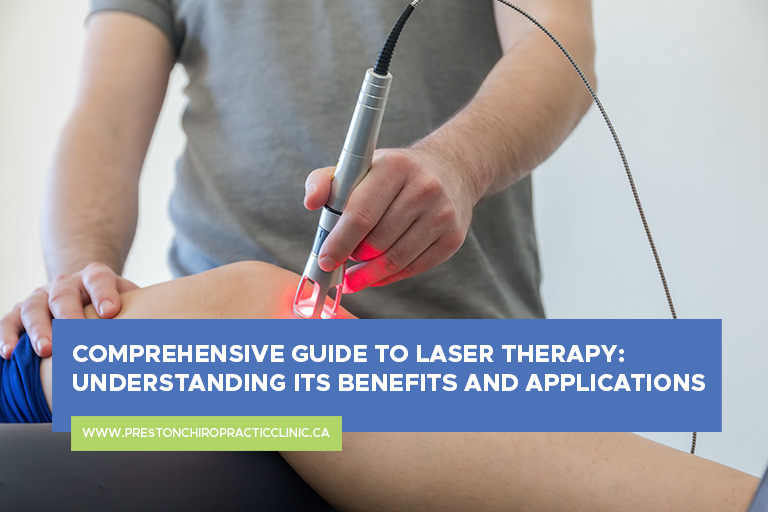 01 Feb 2024
01 Feb 2024
Comprehensive Guide to Laser Therapy: Understanding Its Benefits and Applications
Laser therapy in physiotherapy is a non-invasive treatment method that uses light emissions to target tissue, promoting rapid healing and pain relief. It is ideal for treating various conditions without medication or surgery. The principle behind laser therapy is simple: specific wavelengths of light interact with tissue, leading to accelerated cellular repair and growth, known as photobiomodulation. This process reduces inflammation, alleviates pain, and speeds up the healing of various conditions, from acute injuries to chronic ones like arthritis and back pain.
Understanding Laser Therapy
Laser therapy uses light energy to trigger biological reactions in the cells. These low-level lasers or light-emitting diodes (LEDs) emit photons that penetrate the skin, reaching the targeted tissue. Once absorbed, this light energy is converted into biochemical energy, fostering normal cell function and accelerating the healing process. The therapy is known for its ability to reduce pain and inflammation, enhance tissue repair, and improve circulation.
Different types of laser therapy cater to various treatment needs. Low-level laser therapy (LLLT), also known as cold laser therapy, employs low-intensity laser light. This type doesn’t produce heat, making it safe for direct application to the skin. On the other hand, high-level laser therapy (HLLT) uses higher intensity light, creating a warming sensation, often used for deeper penetration and faster results.
What are the Benefits of Laser Therapy?
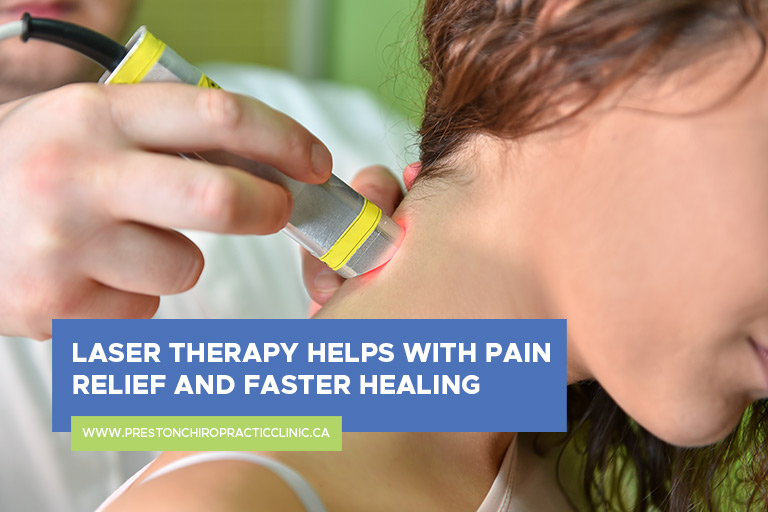
The benefits of laser therapy extend beyond its versatility. It’s a non-invasive, painless procedure with no known side effects when performed correctly. Unlike many pharmacological treatments, laser therapy doesn’t carry the risk of addiction or significant adverse reactions.
- Pain Relief
One notable feature of laser therapy is its amazing capacity to deliver pain relief right away without the need for prescription drugs. By decreasing inflammation and encouraging the release of endorphins, the body’s endogenous analgesics, it tackles the cause of pain at the cellular level. For patients seeking a non-addictive, side-effect-free way to manage pain, this makes it a great treatment option for ailments including fibromyalgia, arthritis, and chronic back pain.
- Accelerated Tissue Repair and Cell Growth
By stimulating the affected cells with light energy, laser therapy enhances mitochondrial activity, leading to faster production of ATP (adenosine triphosphate). This increase in ATP accelerates the repair process of damaged tissues, encouraging cell reproduction and growth. The therapy is particularly beneficial in healing wounds, cuts, and burns, as well as in treating soft tissue injuries, speeding up recovery times significantly compared to traditional healing methods.
- Improved Vascular Activity
Laser therapy significantly increases the formation of new capillaries in damaged tissue, which speeds up the healing process, closes wounds quickly, and reduces scar formation. The enhanced vascular activity ensures that the affected areas receive more oxygen and nutrients, promoting healing and reducing swelling. This vascular improvement is crucial for patients recovering from sprains, strains, and other injuries that benefit from improved blood flow.
- Reduction of Inflammation
One of the key benefits of laser therapy is its ability to reduce inflammation and edema, leading to pain relief, reduced muscle spasms, and improved joint mobility. The therapy achieves this by promoting lymphatic drainage, which helps to reduce swelling. This is particularly beneficial for patients with inflammatory conditions such as tendonitis or chronic inflammation in joints, providing them with a non-invasive option to alleviate symptoms.
- Enhanced Metabolic Activity
By increasing the body’s metabolic activity, laser treatment improves the flow of nutrients across cell membranes. It is an excellent medication for promoting the recovery of numerous illnesses since this increase in metabolic activity helps to restore harmed tissues. Laser therapy accelerates the healing process from various musculoskeletal injuries and aid in the more effective restoration of function to injured cells.
What are the Therapeutic Applications of Laser Therapy?
Laser therapy’s clinical applications are vast and diverse. It’s effective in managing conditions such as:
- Tendonitis
Tendonitis, a condition causing pain and mobility issues, can be treated with laser therapy. This non-invasive method uses low-level lasers to stimulate cellular activity and reduce inflammation, accelerating the healing process. It improves tendon function by enhancing blood circulation and tissue repair, allowing quicker return to daily activities without the need for medications or invasive procedures.
- Carpal Tunnel Syndrome (CTS)
Carpal Tunnel Syndrome (CTS) is a wrist condition causing pain, numbness, and tingling. Laser therapy, using specific wavelengths of light, can reduce inflammation and pain in the wrist, aiming to restore nerve function and relieve symptoms. This treatment promotes cellular repair and improves circulation, offering a promising alternative to surgical intervention, providing relief, and improving hand function in affected individuals.
- Fibromyalgia
Fibromyalgia is a chronic condition causing musculoskeletal pain, fatigue, and tender points. Laser therapy targets these areas of pain using light energy to stimulate healing and reduce discomfort. This treatment enhances tissue repair, reduces inflammation, and increases endorphin release, a natural pain reliever. Patients may experience improved sleep, reduced pain, and improved life quality without relying on pharmacological treatments.
- Rheumatoid Arthritis (RA)
Rheumatoid Arthritis is an autoimmune disorder causing chronic joint inflammation, causing pain, stiffness, and swelling. Laser therapy, a non-pharmacological treatment, reduces joint inflammation and pain by applying low-level lasers to affected joints. This treatment enhances mobility, reduces pain, and supports overall joint health, potentially slowing the disease’s progression.
- Osteoarthritis
Osteoarthritis, a common form of arthritis, is caused by the deterioration of cartilage in joints, causing pain and stiffness. Laser therapy, a treatment using light energy, can alleviate these symptoms by stimulating affected areas, promoting cellular repair, and reducing inflammation. This can improve joint flexibility, reduce pain, and enhance quality of life. Regular sessions can be an effective part of a comprehensive management plan.
- Post-surgical Recovery
Laser therapy is a vital tool in post-surgical recovery, accelerating healing, reducing pain, and minimizing scar tissue formation. It stimulates cellular repair, increases circulation, enhances tissue regeneration, and reduces inflammation. It’s especially beneficial after orthopaedic surgeries, as it restores function more effectively than traditional methods alone. Laser therapy shortens recovery times and significantly improves outcomes for patients undergoing surgery.
Safety and Effectiveness
Safety is a paramount concern in laser therapy. When conducted by trained professionals, the treatment is extremely safe, with minimal to no known side effects of laser therapy. The procedure is usually quick, with sessions lasting only a few minutes, depending on the area being treated. Patients often report significant pain reduction and faster healing. However, the results can vary based on the severity and nature of the condition, with some patients requiring multiple sessions to achieve optimal benefits.
Laser therapy represents a significant advancement in pain management and tissue healing. Whether for chronic pain, or post-surgical recovery, it has the potential to improve quality of life significantly.
For individuals seeking effective laser treatment in Cambridge, Preston Chiropractic & Physiotherapy Clinic offers expert care. With a focus on personalized treatment plans, our experienced team ensures optimal results. To learn more or to schedule an appointment, call us at (519) 653-7139 today.
BY: PrestonchroAdmin
Blog
COMMENTS: No Comments
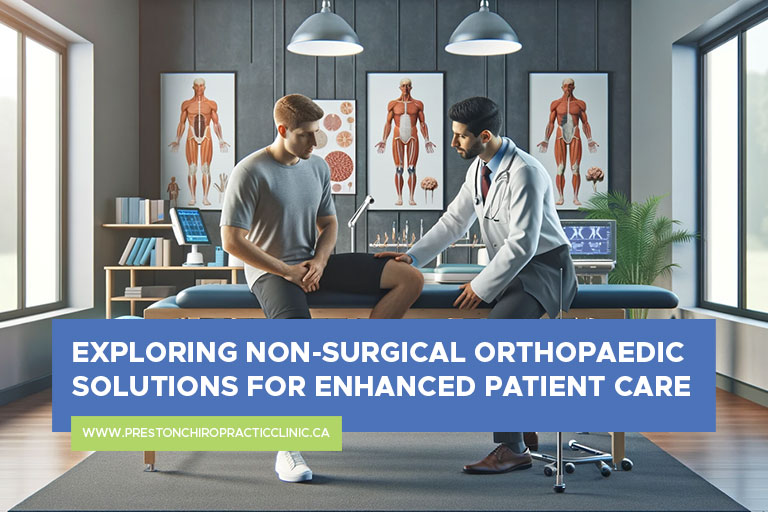 24 Jan 2024
24 Jan 2024
Exploring Non-Surgical Orthopaedic Solutions for Enhanced Patient Care
Orthopaedic problems, whether arising from sports-related injuries, degenerative conditions, or the natural wear and tear of everyday activities, can profoundly impact your overall well-being. These musculoskeletal issues can lead to pain, limited range of motion, and decreased functionality.
Traditionally, surgical procedures were frequently the primary approach to address these problems. In recent times, minimally invasive orthopaedic treatments have gained prominence, providing patients with several advantages and benefits. In this comprehensive guide, let’s explore the non-surgical orthopaedic options and highlight their advantages over surgical procedures.
Orthopaedics and its Benefits
Orthopaedics is a branch of medicine dedicated to diagnosing, treating, preventing, and rehabilitating musculoskeletal disorders. This field addresses ailments affecting bones, joints, ligaments, tendons, and muscles, integral to human movement and activity.
Benefits of orthopaedic treatments include:
- Improved Quality of Life
Orthopaedic treatments can significantly improve a person’s quality of life by alleviating pain and restoring function to the musculoskeletal system. Whether treating a fractured bone, replacing a damaged joint, or addressing chronic conditions like osteoarthritis, orthopaedic interventions can help individuals regain mobility and enjoy an active lifestyle.
- Pain Relief
Orthopaedic specialists are experts in managing musculoskeletal pain. They use a variety of non-surgical techniques to relieve pain caused by conditions such as arthritis, sports injuries, spinal disorders, and more. By addressing the underlying cause of pain, patients can experience significant relief and enhanced comfort.
- Injury Prevention and Rehabilitation
Orthopaedic care isn’t just about treating existing conditions. It also focuses on injury prevention and rehabilitation. Orthopaedic professionals develop exercise programs, recommend lifestyle modifications, and provide guidance on preventing injuries. Additionally, they assist patients in recovering from surgery or injuries through rehabilitation programs tailored to their specific needs.
- Increased Mobility and Function
Orthopaedic treatments can restore lost mobility and function in joints and limbs. This allows patients to perform daily activities more easily, participate in sports and recreational activities, and maintain an active and independent lifestyle.
- Personalized Treatment Plans
To develop enhanced patient care Orthopaedic treatment, specialists assess each patient’s unique condition and lifestyle. This ensures that the chosen interventions are tailored to the patient’s specific needs, goals, and overall health, leading to better outcomes.
Orthopaedic Treatment Alternatives to Surgery
Surgery is often perceived as a last resort in orthopaedic care due to its invasive nature, recovery time, and potential complications. Fortunately, numerous non-surgical alternatives can be equally effective in managing orthopaedic conditions. These alternatives focus on pain relief, healing, and restoration of function, offering patients a gentler approach to orthopaedic care.
- Physical Therapy
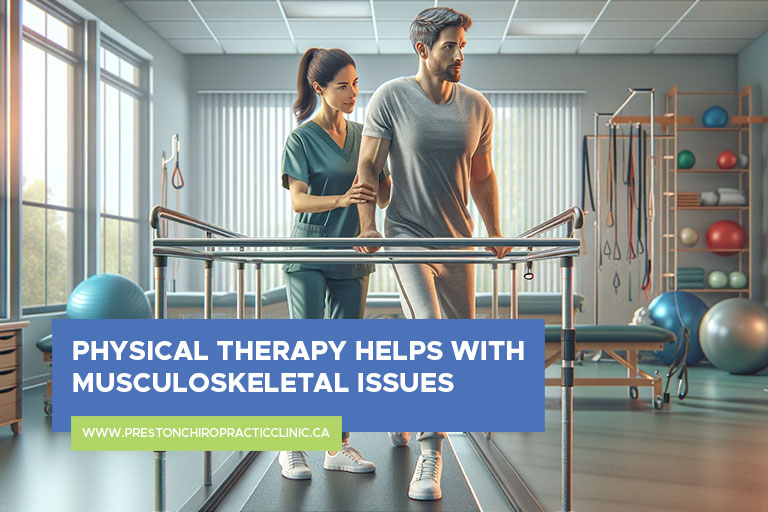
Physical therapy is fundamental to non-surgical orthopaedic care, involving tailored exercise regimens and hands-on manual therapy techniques. The primary objective is to bolster muscle strength, enhance flexibility, and improve joint mobility. Skilled physical therapists utilize various modalities, including heat therapy, electrical stimulation, and ultrasound, to expedite healing and alleviate pain. This non-surgical treatment for musculoskeletal issues also provides patients with the tools to prevent future problems through improved physical fitness and overall well-being.
- Chiropractic Care
Chiropractic care specializes in spinal and joint adjustments and manipulations to alleviate pain, optimize alignment, and enhance overall bodily function. Particularly beneficial for conditions such as lower back pain, neck pain, and certain types of headaches, chiropractors utilize precise techniques to restore joint mobility and alleviate discomfort. By addressing spinal misalignments and joint restrictions, chiropractic care aims to improve nerve function, reduce inflammation, and promote the body’s natural ability to heal itself.
- Osteopathy
Osteopathic treatment revolves around the musculoskeletal framework of the body. Osteopaths employ manual techniques to harmonize the body’s structures, release tension, and enhance blood circulation, facilitating the body’s natural healing mechanisms. This approach acknowledges the interconnectedness of various bodily systems and strives to restore balance and vitality. Osteopathy is effective for managing a wide range of conditions and can contribute to improved overall health and well-being.
- Orthobiologics
Orthobiologics is an innovative field that harnesses the body’s natural substances, such as platelet-rich plasma (PRP) and stem cells, to accelerate the healing process in musculoskeletal injuries. These regenerative therapies have demonstrated significant potential in treating conditions like tendon injuries, osteoarthritis, and ligament sprains. By introducing these biologically active agents into damaged tissues, orthobiologics promote tissue repair, reduce inflammation, and, ultimately, enhance the body’s ability to recover from injuries.
- Acupuncture
Acupuncture, an ancient healing practice, involves the insertion of fine needles into specific points of the body to manage pain and inflammation in various orthopaedic conditions. This traditional Chinese medicine technique stimulates the body’s natural energy flow, or Qi, and triggers the release of endorphins, the body’s natural painkillers. Acupuncture has been shown to effectively relieve pain associated with conditions like osteoarthritis, chronic back pain, and sports injuries, offering patients a drug-free and non-invasive Orthopaedic therapy option for pain management.
- Lifestyle Modification
In some cases, making simple adjustments to daily activities and ergonomics can have a profound impact on your health. Lifestyle modifications such as weight management, correcting posture, and making ergonomic changes in the workplace or home can reduce musculoskeletal system stress. These changes alleviate current discomfort and play a preventive role in reducing the risk of future orthopaedic issues and improving overall well-being.
- Medications and Injections
Non-steroidal anti-inflammatory drugs (NSAIDs) and corticosteroid injections are frequently employed to manage inflammation and pain in orthopaedic conditions. When combined with other non-surgical therapies, these pharmaceutical treatments can provide substantial relief. NSAIDs reduce inflammation, while corticosteroid injections can offer targeted relief by decreasing inflammation and suppressing immune responses.
- Bracing and Orthotics
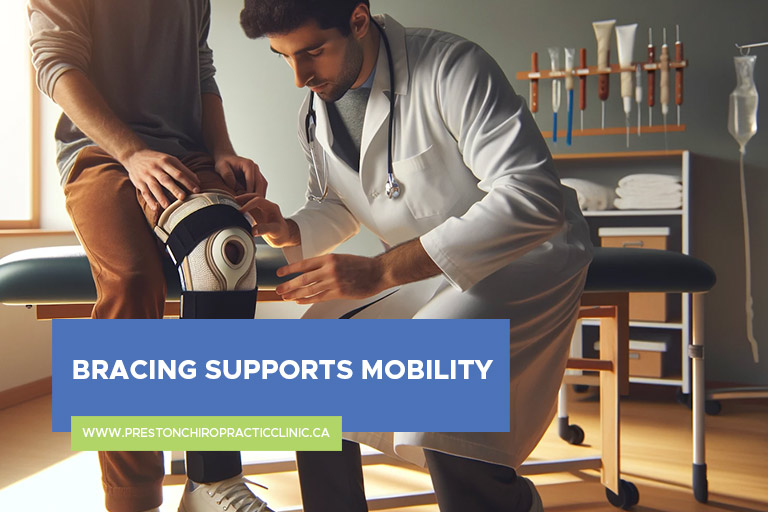
Custom braces and orthotic devices are designed to support and protect injured joints or limbs while promoting healing and maintaining mobility. They are particularly valuable in conditions like knee osteoarthritis, ankle sprains, and post-surgical recovery. These devices provide stability, reduce pain, and enhance function, allowing patients to maintain an active lifestyle while safeguarding against further damage to the affected areas. Customization ensures a tailored fit and maximum therapeutic benefit.
The field of orthopaedics offers a multitude of non-surgical options for treating musculoskeletal issues. These non-surgical alternatives not only provide relief but also empower patients with choices in their healthcare journey. By exploring these options, healthcare providers can deliver personalized, effective care that aligns with their patients’ needs and lifestyles.
For those seeking patient-centred orthopaedic care, Preston Chiropractic & Physiotherapy Clinic offers a range of services, including top-notch Cambridge physiotherapy. To explore how these non-surgical treatments can benefit you or your patients, visit Cambridge Physiotherapy or call (519) 653-7139 for more information.
BY: PrestonchroAdmin
Blog
COMMENTS: No Comments
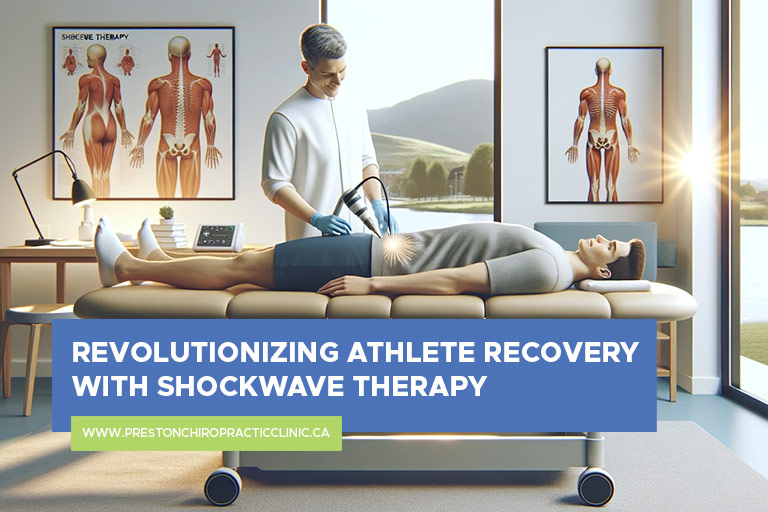 17 Jan 2024
17 Jan 2024
Revolutionizing Athlete Recovery with Shockwave Therapy
Numerous athletes engage in extensive training involving running, stretching, jumping, and playing to maintain peak physical condition for competitions. This relentless and intense regimen can take a toll on their bodies.
Both amateur and professional athletes are susceptible to sports injuries for various reasons. Pushing beyond one’s physical limits can cause issues like muscle-tendon irritation, inflammation, joint pain, and fractures. Following proper preventive measures and treatments is crucial to prevent such injuries.
In sports medicine, shockwave therapy and physiotherapy are emerging as promising treatments. If you’ve been consulting medical experts for months with no relief from chronic pain, this therapy might be worth considering.
What is Shockwave Therapy?
Shockwave therapy, a revolutionary non-invasive medical treatment, has gained prominence as an effective method for treating various musculoskeletal conditions in athletes. It harnesses the power of sound waves to target injured or damaged tissues within the body. These high-energy acoustic waves are generated by a specialized device and transmitted to the affected area through a handheld applicator. When these waves interact with the injured tissue, they initiate a cascade of biological responses, including increased blood flow, tissue regeneration, and the release of growth factors.
Conditions that Shockwave Therapy Can Treat
Shockwave therapy has shown remarkable success in treating a wide range of musculoskeletal conditions that commonly afflict athletes. Some of the most common conditions that can be effectively addressed with this therapy include:
- Plantar Fasciitis
This condition, frequently encountered by athletes, involves inflammation of the plantar fascia, a thick band of tissue on the bottom of the foot. The persistent pain, often felt in the heel, can significantly hinder mobility and athletic performance. Shockwave therapy offers a non-invasive solution by sending pulses to stimulate the affected area, encouraging blood flow and tissue repair. This therapy helps alleviate pain, reduce inflammation, and speed up recovery.
- Tennis and Golfer’s Elbow
Tennis elbow and golfer’s elbow are common injuries often arising from repetitive wrist and arm motions. Shockwave therapy addresses these ailments by focusing on the damaged tendons. It stimulates the injured area, reducing inflammation and pain and promoting the regeneration of tendon tissues. This therapy aids in restoring normal elbow function and helps athletes return to their sport with improved elbow strength and less discomfort.
- Achilles Tendonitis

Achilles tendonitis is the inflammation of the Achilles tendon, the band connecting calf muscles to the heel. This condition leads to pain and stiffness in the heel area, affecting an athlete’s ability to run and jump effectively. Shockwave therapy for tendon repair delivers high-energy pulses to the affected region. These pulses promote healing by increasing blood circulation and cellular repair activities, helping to alleviate pain and enhance the flexibility and strength of the Achilles tendon.
- Rotator Cuff Injuries
Rotator cuff injuries, including tears and strains, can significantly impair shoulder movement and strength. These injuries often result from repetitive overhead motions. Shockwave therapy offers a therapeutic approach by directing energy waves to the injured shoulder tissues. This process stimulates natural healing mechanisms, reduces inflammation, and helps repair and strengthen damaged tissues.
- Stress Fractures
Athletes, particularly those involved in high-impact sports, are at risk of developing stress fractures, small cracks in the bone caused by repetitive stress. These fractures can lead to pain, swelling, and prolonged periods away from sport. Shockwave therapy stimulates bone cells and increases blood flow to the affected area. This accelerates bone repair and strengthens the weakened area, potentially reducing recovery time and allowing athletes to resume training and competition more quickly.
- Chronic Muscle Pain
Chronic muscle pain can severely affect an athlete’s performance and overall well-being. Shockwave therapy provides relief by targeting the specific muscles and trigger points experiencing pain. The treatment works by releasing tension, facilitating blood circulation, and stimulating the body’s natural healing processes. This leads to enhanced muscle relaxation and improved function, enabling athletes to perform at their best with increased comfort and reduced risk of further injury.
- Patellar Tendonitis
Also known as jumper’s knee, patellar tendonitis is a common condition among athletes that involves inflammation of the tendon connecting the kneecap to the shinbone. The knee pain can limit an athlete’s ability to perform jumping and running activities. Shockwave therapy delivers targeted pulses to the inflamed tendon to stimulate healing, reduce inflammation, and alleviate pain.
Benefits of Shockwave Therapy
Athletes stand to gain numerous benefits from incorporating shockwave therapy into their treatment plans:
- Non-Invasive Treatment
One of the primary benefits of Shockwave Therapy is its non-invasive nature. Unlike surgical procedures, it does not require any incisions or anaesthesia, minimizing the risk of infection and complications. This makes it an attractive option for patients looking for less invasive treatment methods.
- Pain Reduction
Shockwave Therapy effectively reduces pain, especially in conditions involving connective tissues like tendons and ligaments. It works by stimulating the body’s natural healing processes, which can reduce pain and discomfort in the treated area.
- Accelerates Healing
The therapy promotes the regeneration and repair of bones, tendons, and other soft tissues. It does this by enhancing blood circulation to the affected area, which is crucial for the healing process. Faster healing means a quicker return to daily activities or sports.
- Enhanced Performance
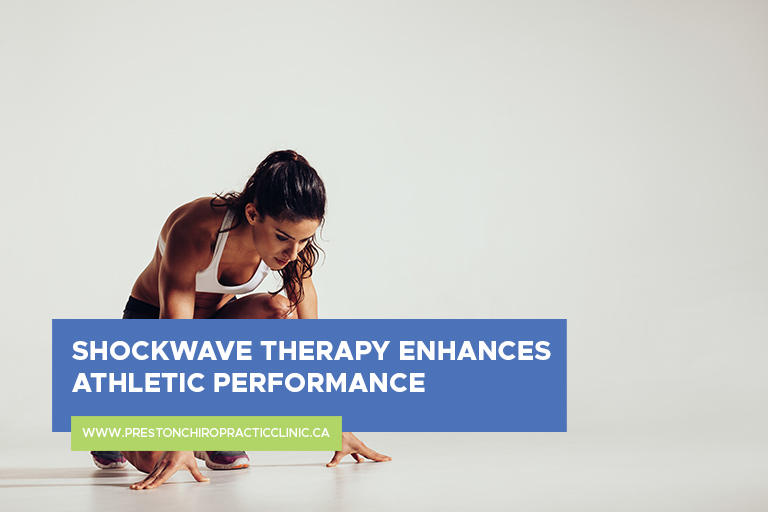
Athlete’s regained strength, increased flexibility, and better endurance affect their overall performance. Such progress not only elevates their capabilities in their respective sports but also contributes to a more robust and resilient physique, reducing the likelihood of future injuries.
- Drug-Free Approach
For those looking to avoid or reduce reliance on pain medication, Shockwave Therapy can be an effective alternative. It provides pain relief and promotes healing without the need for medication, which can be beneficial for patients concerned about the side effects of long-term drug use.
- Improves Mobility
Shockwave Therapy can help improve mobility in patients by reducing pain and inflammation and promoting tissue healing. This is particularly beneficial for athletes or individuals with chronic pain, as it can improve performance and quality of life.
Visit a Shockwave Therapy Clinic
Shockwave therapy has emerged as a game-changing treatment option for athletes dealing with various musculoskeletal conditions. The fast recovery time from shockwave therapy, coupled with its non-invasive nature and effectiveness in reducing pain and improving performance make it a valuable tool in sports medicine. If you’re an athlete needing injury treatment or simply looking to optimize your performance, consider exploring the benefits of shockwave therapy.
For athletes seeking professional shockwave therapy in Cambridge, visit Preston Chiropractic & Physiotherapy Clinic. Contact us at (519) 653-7139 or visit our website for more information. Take advantage of this innovative treatment to get back on track and achieve your fitness goals.
BY: PrestonchroAdmin
Blog
COMMENTS: No Comments
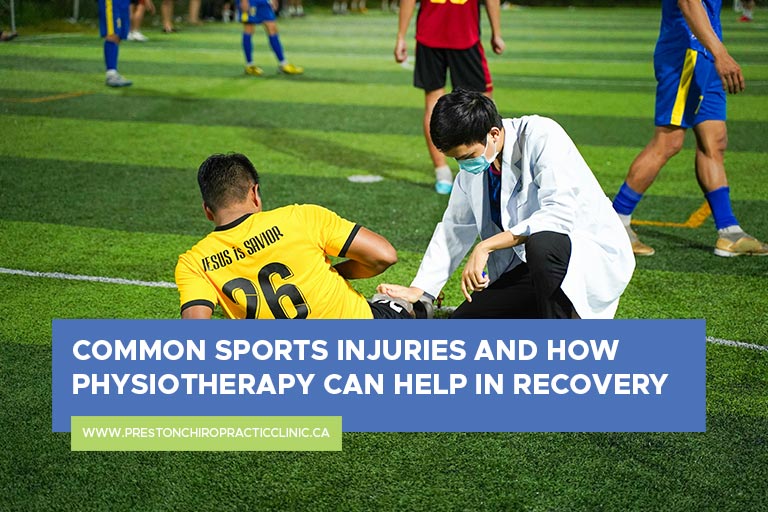 10 Jan 2024
10 Jan 2024
Common Sports Injuries and How Physiotherapy Can Help in Recovery
Engaging in sports and being physically active can provide you with much satisfaction, physical fitness, mental well-being, and a sense of camaraderie. However, the physical demands of sports can sometimes lead to injuries. Sports injuries are an unfortunate but common occurrence in the world of athletics. Whether you’re a professional athlete or just like to play sports for fun, the risk of getting injured is always present. These injuries can be anything from little sprains and strains to more serious issues like torn ligaments and fractures.
Fortunately, there’s a solution – physiotherapy. This approach to rehabilitation can significantly aid in the recovery process, helping individuals regain strength, mobility, and function. While no one plans to get injured, understanding the common types of sports injuries and the role of physiotherapy in the injury recovery process can make a significant difference in your rehabilitation journey. In this article, we will explore the various common sports injuries and how physiotherapy can be crucial in helping athletes get back in the game.
Types of Sports Injury
In sports, injuries can be as much a part of the game as the thrill of victory. From minor sprains to severe fractures, understanding the different types of sports injuries is important for athletes and enthusiasts alike.
- Sprains and Strains
Sprains and strains are some of the most common sports injuries. A strain involves injury to a muscle or tendon, while a sprain results from a stretched or torn ligament that joins one bone to another. Sudden movements, overexertion, or improper techniques during sports activities often cause these injuries. Physiotherapy can assist in rehabilitation by employing techniques such as strengthening exercises, joint mobilization, and manual therapy to promote healing and restore normal function.
- Tendonitis
Tendonitis, also known as tendinitis, is the inflammation of the tendon, which joins muscle to bone. It may result from overuse or repetitive motions, commonly seen in sports like tennis, golf, and running. Physiotherapy plays a vital role in managing tendonitis by incorporating exercises to strengthen the affected area, minimizing inflammation while improving the range of motion.
- Fractures and Dislocations
Fractures and dislocations are more severe sports injuries that require immediate medical attention. A fracture involves a broken bone, while a dislocation occurs when two bone surfaces lose contact at a joint. Physiotherapy is essential after the initial treatment to aid in the recovery process. It reduces pain, swelling, and stiffness while gradually restoring function and strength to the injured area.
- Knee Injuries
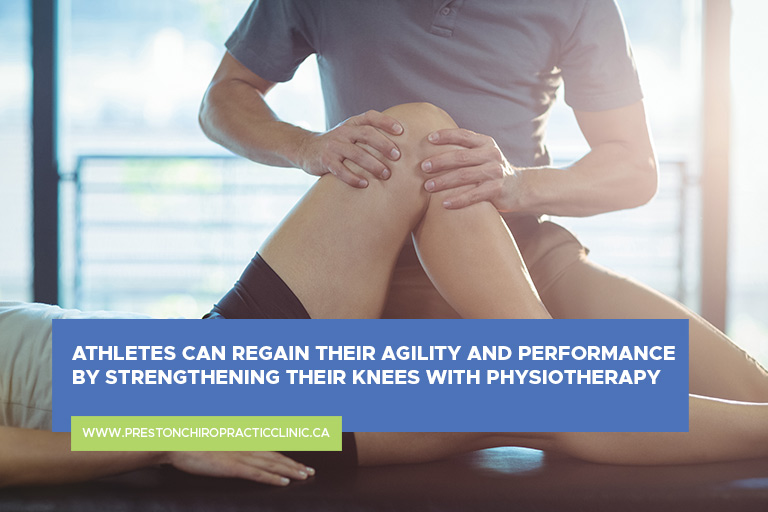
The knee is a vulnerable joint in many sports and can be susceptible to various injuries, such as ligament tears (e.g., ACL tears), meniscus tears, and patellofemoral pain syndrome. Physiotherapy is a cornerstone in the rehabilitation of knee injuries. It involves targeted exercises to strengthen the muscles surrounding the knee, improve joint stability, and enhance range of motion, helping athletes regain their agility and performance.
- Shoulder Injuries (Rotator Cuff Tears)
Shoulder injuries, mainly rotator cuff tears, are common in sports that involve overhead movements, like baseball, swimming, and tennis. Physiotherapy for shoulder injuries includes exercises to strengthen the rotator cuff muscles, improve shoulder stability, and enhance flexibility. These interventions aim to reduce pain and restore full shoulder function.
- Back Injuries (Herniated Discs)
Back injuries, such as herniated discs or muscle strains, can be debilitating for athletes. Physiotherapy for back injuries focuses on alleviating pain, restoring spinal mobility, and strengthening the muscles that support the spine. This comprehensive approach aids in the gradual recovery of athletes, allowing them to resume their activities safely.
- Ankle Sprains
Ankle sprains are a common sports injury that often results from the foot rolling inward or outward, causing damage to the ligaments. Physiotherapy helps reduce swelling, improve ankle stability, and promote proper healing through exercises and manual therapy techniques.
Severe Sports Injury
While the injuries mentioned above are relatively common, some athletes unfortunately face more severe sports injuries that require extensive rehabilitation. These can include the worst injuries in sport, where the road to recovery demands physical resilience and a steadfast mental attitude.
- Torn ACL
A torn anterior cruciate ligament (ACL) is a severe knee injury that typically requires surgical intervention. Post-surgery physiotherapy is crucial in rebuilding the knee joint’s strength, stability, and range of motion. It involves progressive exercises and a structured rehabilitation program to ensure a successful recovery.
- Severe Concussions
Concussions are traumatic brain injuries that can have long-lasting effects. Physiotherapy for severe concussions focuses on addressing associated symptoms like dizziness, balance issues, and cognitive deficits. Specialized exercises and therapies are designed to help athletes gradually regain their mental and physical functions.
- Torn Ulnar Collateral Ligament
A torn ulnar collateral ligament (UCL) in the elbow is a significant concern for baseball players. Physiotherapy after UCL reconstruction surgery helps athletes regain elbow strength, stability, and throwing mechanics. It includes targeted exercises and a gradual return-to-throwing program.
- Spinal fracture
A spinal fracture is a severe spinal injury that requires immediate medical attention. Physiotherapy, in such cases, aims to minimize pain, improve mobility, and enhance the overall quality of life for the athlete. It often includes exercises and manual therapy tailored to the patient’s specific needs.
- Femur and Tibia Fracture
Fractures of the femur (thigh bone) or tibia (shin bone) can be debilitating. Physiotherapy focuses on strengthening the affected limb, improving mobility, and assisting with weight-bearing activities. Rehabilitation programs are individualized to ensure a safe and effective recovery.
Even the most skilled and experienced athlete can get injured. However, the road to recovery doesn’t have to be daunting. Recognizing the benefits of sports physiotherapy, a vital rehabilitation tool can help athletes regain their strength, mobility, and function after sports injuries. Whether it’s a common sprain or a severe injury like a torn ACL or spinal fracture, physiotherapy plays a crucial role in the journey back to peak performance.
If you are dealing with a sports injury, don’t hesitate to seek the help of professionals from a physiotherapist in Cambridge. Remember, the road to recovery may be challenging, but with the proper guidance and dedication, athletes can return stronger than ever.
For comprehensive physiotherapy services and expert care, contact Preston Chiropractic & Physiotherapy Clinic at (519) 653-7139. Don’t let a sports injury keep you on the sidelines – take the first step towards recovery today!
BY: PrestonchroAdmin
Blog
COMMENTS: No Comments
 03 Jan 2024
03 Jan 2024
The Comprehensive Guide to Orthotics: Enhancing Mobility and Comfort
Our feet bear the weight of our journeys, often silently enduring the strains of our daily activities. For many, foot-related issues can become a significant challenge, impacting mobility and overall well-being. Through the years, orthotics have emerged as the unsung heroes in podiatric care. This comprehensive guide explores orthotics, shedding light on the different types, the conditions they can address, and the many benefits they offer. Let’s learn more about these discreet champions providing solutions and ensuring each step becomes a testament to comfort and improved well-being.
What Are Orthotics
Before we delve into the specifics, it’s essential to understand what orthotics are and what orthotics do. Simply put, orthotics are custom-designed inserts or devices that provide support and alignment to the feet. These can be inserted into shoes to correct foot abnormalities, alleviate pain, and enhance overall foot function. While many people associate orthotics with older people, they are a versatile solution catering to individuals of all ages and activity levels.
Types of Orthotics
Orthotics come in various shapes and sizes, tailored to meet the diverse needs of individuals. There are two main categories: Custom Orthotics and Over-the-counter (OTC) Orthotics.
- Custom Orthotics
Custom orthotics are expertly made to fit each person’s unique foot type and gait. These are usually prescribed by podiatrists or orthopedic experts following a comprehensive examination of the patient’s legs, ankles, and feet. Personalized support is also provided by custom orthotics, which guarantee that each foot’s particular biomechanics are taken into account.
- Over-the-counter (OTC) Orthotics
On the other end of the spectrum are Over-the-Counter (OTC) orthotics. These are pre-made, mass-produced inserts available without a prescription. While they may offer some support and comfort, they lack the tailored precision of custom orthotics. OTC options are often more affordable and readily accessible, making them popular for those seeking a quick remedy for mild foot issues.
Conditions that Orthotics Can Treat
What is the use of orthotics? Orthotics serve as versatile solutions, addressing a wide array of foot-related conditions. Let’s explore some common issues that orthotics can effectively manage:
- Flat Feet
Flat feet, a condition where the arches of the feet collapse, can cause discomfort and affect mobility. Designers create custom orthotics to provide the necessary arch support, promoting proper alignment and reducing foot stress.
- High arches
Conversely, high arches can lead to excessive pressure on the ball and heel of the foot. Orthotics can offer cushioning and distribute weight more evenly. This solution mitigates the discomfort associated with high arches.
- Plantar Fasciitis
Plantar fasciitis, characterized by inflammation of the tissue connecting the heel bone to the toes, can lead to intense heel pain. Orthotics for plantar fasciitis provide crucial arch support, redistributing pressure and alleviating strain on the plantar fascia.
- Injuries
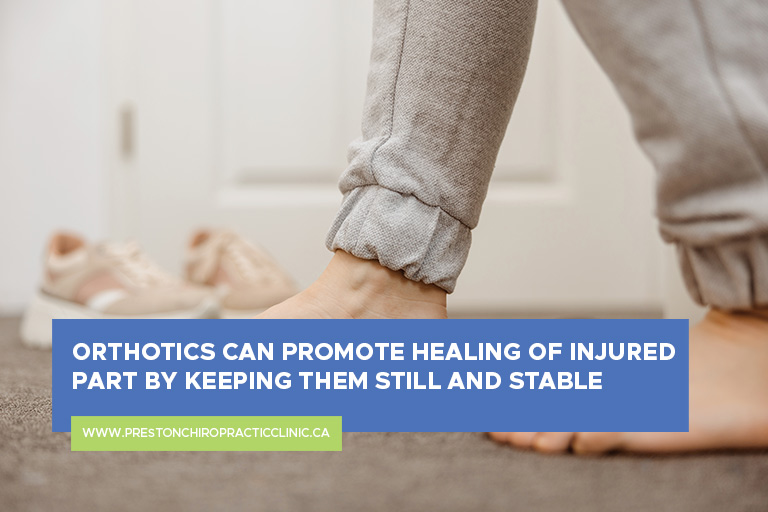
Whether recovering from a foot injury or seeking preventive measures, orthotics play a vital role. They provide support, stability, and promote proper healing, reducing the risk of re-injury.
- Back pain
Foot problems can have a cascading effect on the body, leading to back pain. Orthotics address the root cause by correcting gait and promoting optimal alignment, thus alleviating associated back discomfort.
- Arthritis
Arthritic conditions, such as osteoarthritis or rheumatoid arthritis, can impact the joints in the feet. Arthritic conditions, like osteoarthritis or rheumatoid arthritis, affect foot joints. Orthotics provide relief by reducing joint pressure and offering cushioning. This allows individuals with arthritis to move more comfortably, easing the struggle associated with the condition and enhancing their overall mobility.
- Diabetes
Diabetic individuals often face foot complications due to reduced blood flow and nerve damage. Orthotics designed for diabetics focus on pressure distribution and shock absorption, minimizing the risk of ulcers and other complications.
- Heel spurs
Heel spurs, or the painful bony protrusions on the heel bone, can cause intense pain. Orthotics offer relief by cushioning and supporting the foot, alleviating discomfort and enhancing the overall walking experience. Step confidently with the comfort provided by orthotic solutions for heel spurs.
- Bunions
Bunions, characterized by a bony bump at the base of the big toe, can benefit from orthotics designed to alleviate pressure and reduce friction. Orthotics offer relief and slowing the progression of the condition.
- Hammer toes
Orthotics can also assist in managing hammer toes, a condition where the toes bend unnaturally. By providing proper alignment and reducing pressure, orthotics increase comfort and functionality.
Benefits of Orthotics
Beyond treating common foot issues, regularly wearing orthotics has many advantages. Here are some of the benefits orthotics may offer:
- Pain Relief
One of the primary benefits of orthotics is pain relief. Orthotics offer relief from foot pain and discomfort by correcting alignment issues, reducing pressure points, and providing targeted support. This can then positively impact the overall quality of life.
- Improved Performance
Athletes and individuals engaged in physical activities can experience enhanced performance using orthotics. Orthotics improve stability, balance, and overall biomechanics by optimizing foot function and alignment, aiding in better athletic performance.
- Prevention of Further Issues
Orthotics address existing foot problems and act as preventive measures against future issues. By promoting proper alignment and mitigating excessive pressure on specific areas of the feet, orthotics help prevent the development or progression of various conditions.
Our feet play an important role as they help and support us in our daily activities. Orthotics emerge as a beacon of hope for people suffering from foot-related issues, offering a tailored approach to enhance mobility and comfort. Whether custom-crafted for precise intervention or acquired over the counter for general support, orthotics present a versatile solution for individuals across age groups and lifestyles.
As you explore orthotics, remember that your feet deserve the utmost care and attention. Consult a healthcare professional to determine the most appropriate orthotic solution for your unique needs. Embrace the transformative power of orthotics for feet, and step into a future where every step is a testament to enhanced mobility and unparalleled comfort. Your feet deserve nothing less than the best care orthotics can provide.
If you’re considering orthotics in Cambridge to alleviate your pain and enhance your well-being, schedule an initial consultation at Preston Chiropractic Clinic by calling us at (519) 653-7139.
BY: PrestonchroAdmin
Blog
COMMENTS: No Comments

